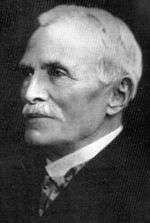H. C. A. Harrison
| H. C. A. Harrison | |||
|---|---|---|---|
|
H.C.A. Harrison in his later life | |||
| Personal information | |||
| Full name | Henry Colden Antill Harrison | ||
| Date of birth | 16 October 1836 | ||
| Place of birth | Jarvisfield, New South Wales | ||
| Date of death | 2 September 1929 (aged 92) | ||
| Place of death | Melbourne, Victoria | ||
| Career highlights | |||
Henry Colden Antill Harrison (16 October 1836 – 2 September 1929) was a notable early Australian rules football player and administrator.
Harrison's cousin, champion cricketer Tom Wills, founded Australian rules football in 1859, and within a year, Harrison joined him in promoting the new code. Harrison and Wills were the only pioneer figures to be inaugural inductees of the Australian Football Hall of Fame in 1996.
Early life and professional work
Harrison was born at 'Jarvisfield', near Picton, New South Wales, the son of John Harrison, a sea captain who had become a grazier, and his wife Jane, née Howe. In about 1837, the family moved to the Port Phillip District, and took up land on the Plenty River about 20 miles (32 km) from Melbourne. Some years later, they moved to the present site of St Arnaud.
In 1850, Harrison's father, being broken in health, moved to Melbourne. Henry had already been sent at the beginning of the year to the Diocesan Grammar School (the forerunner of Melbourne Grammar). After leaving school, he spent a short time in the Victorian goldfields, H. C. A. Harrison entered formal employment at the Victorian Customs Department at the end of 1853. He married his cousin, Emily Wills, in 1864 and they had four daughters.
Harrison remained with Customs for 35 years, before transferring to the Titles Office in 1887. He became Registrar of Titles in 1889, retiring in 1896. His autobiography, The Story of an Athlete, was published in 1923. Harrison died at Kew, in Melbourne, on 2 September 1929, at age of 92.
Athlete

Harrison did not discover he was a good runner until he was 22 years of age, but soon afterwards he became the finest amateur runner of his period, and his matches against L. L. Mount of Ballarat caused much public interest. For nine years he was Victorian champion 'pedestrian', defeating all comers in sprints and over hurdles and steeples.[1] He recorded a time of 50¼ seconds over 440 yards (400 m), on a grass track.
Football and cricket

Harrison's cousin Tom Wills began to codify Australian rules football in Melbourne, in 1858. Wills' game eventually became the most popular kind of football of in Victoria, South Australia, Western Australia, Northern Territory and Tasmania. Some sources state that Harrison was involved and/or that he took part in the drafting of the first set rules, by the Melbourne Football Club (1859); Wills and Harrison were later recognised as the "Fathers" of Australian rules. However, there is no hard evidence that Harrison was involved in the development of Australian rules during the 1850s.
On 8 May 1866, Harrison chaired a meeting of club delegates in order to draft a revised set of rules, and his changes were unanimously agreed upon. A major development in these revised rules was Rule 8, which read: "The ball may be taken in hand at any time, but not carried further than is necessary for a kick, and no player shall run with the ball unless he strikes it against the ground every five or six yards." The running bounce was adopted to curtail the speed of the fastest players, in particular Harrison. Arthur Conan Doyle, creator of Sherlock Holmes and fan of Australian rules football, remarked: "I thought it was very sporting of [Harrison], as the fastest runner of his day, to introduce the bouncing rule, which robbed him of his advantage."[2]
Harrison was successively captain of the Richmond, Melbourne and Geelong clubs, and then of Melbourne again.
Harrison was elected a member of the committee of the Melbourne Cricket Club in 1871, and was a vice-president from 1892 until his death.
Harrison retired from football in 1872 at the age of 36. He once stated that he considered that the reason of his being able to stay so long was that he did not begin his athletic career until he was over 20. When the Victorian Football Association was formed in 1877, Harrison was elected vice-president, and in 1905 he was chairman of the first Australian Football Council, and was officially granted life membership to the council.
Following his retirement, Harrison was president of the Melbourne Football Club from 1897 to 1906.
A building, "Harrison House" in Spring Street, Melbourne, was named after him. It was purchased by the VFL in the 1920s to become their new headquarters,[1] but later sold and demolished in the 1980s despite appeals from various heritage organisations of its historical significance.
The Harrison Medal, which is awarded to the best player in Division 2 at the AFL Under 18 Championships is often mistakenly thought to be named in his honour. It is, however, named after longtime NTFL administrator Hunter C. Harrison.
References
- 1 2 Ian Turner, 'Harrison, Henry Colden Antill (1836-1929)', Australian Dictionary of Biography, Vol.4, Melbourne University Press, 1972, p.353 Retrieved 21 January 2009
- ↑ 'The best game' says Conan Doyle, Australian Football. Retrieved 26 February 2015.
- Serle, Percival (1949). "Harrison, Henry Colden Antill". Dictionary of Australian Biography. Sydney: Angus and Robertson.
External links
- Australian Football Hall of Fame – Administrators
- "Father of Football" (portrait), The Argus, (Thursday, 17 November 1927, p.15, col.E.
| Sporting positions | ||
|---|---|---|
| Preceded by unknown |
President of the Melbourne Football Club 1897–1906 |
Succeeded by T. F. Morkham |
